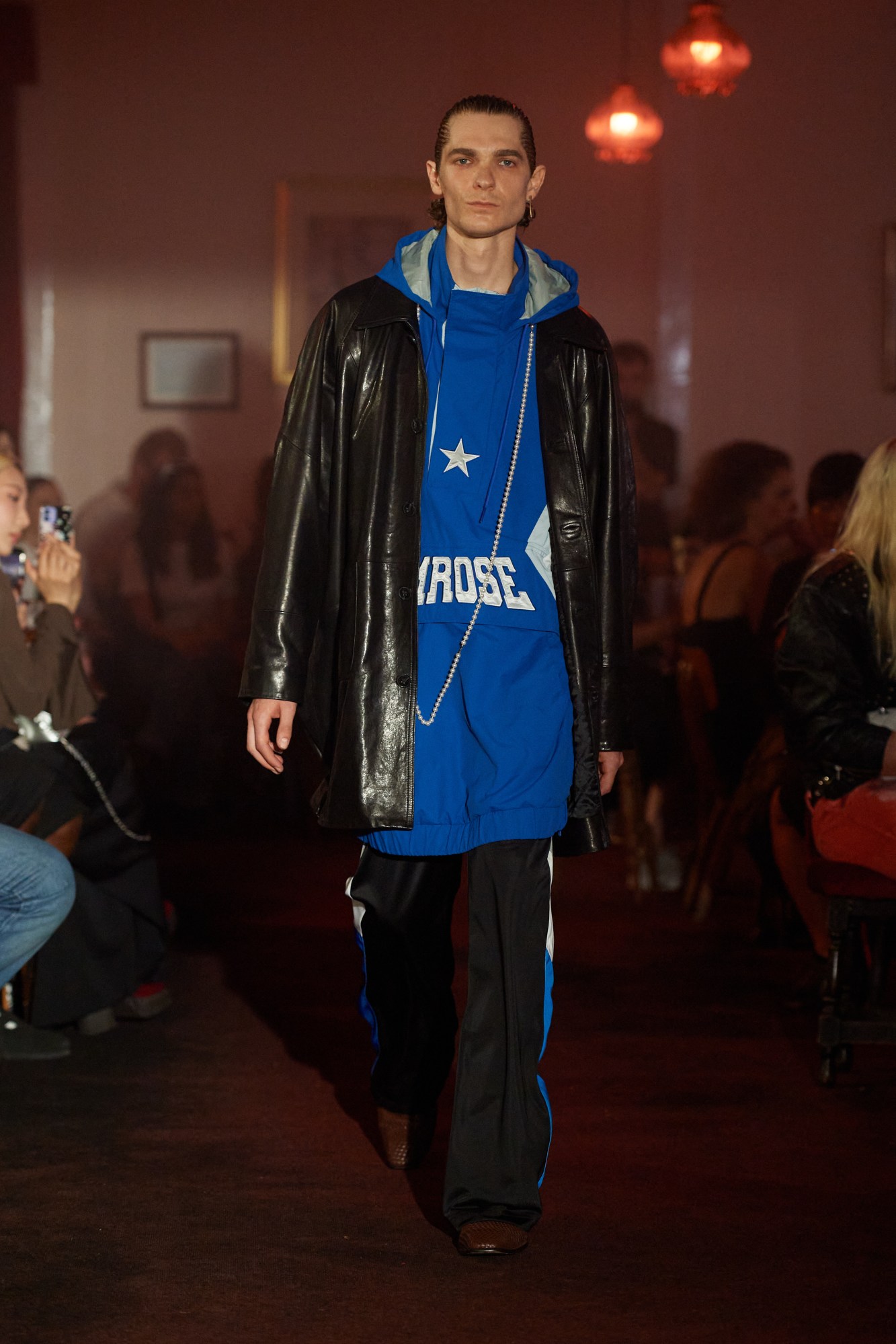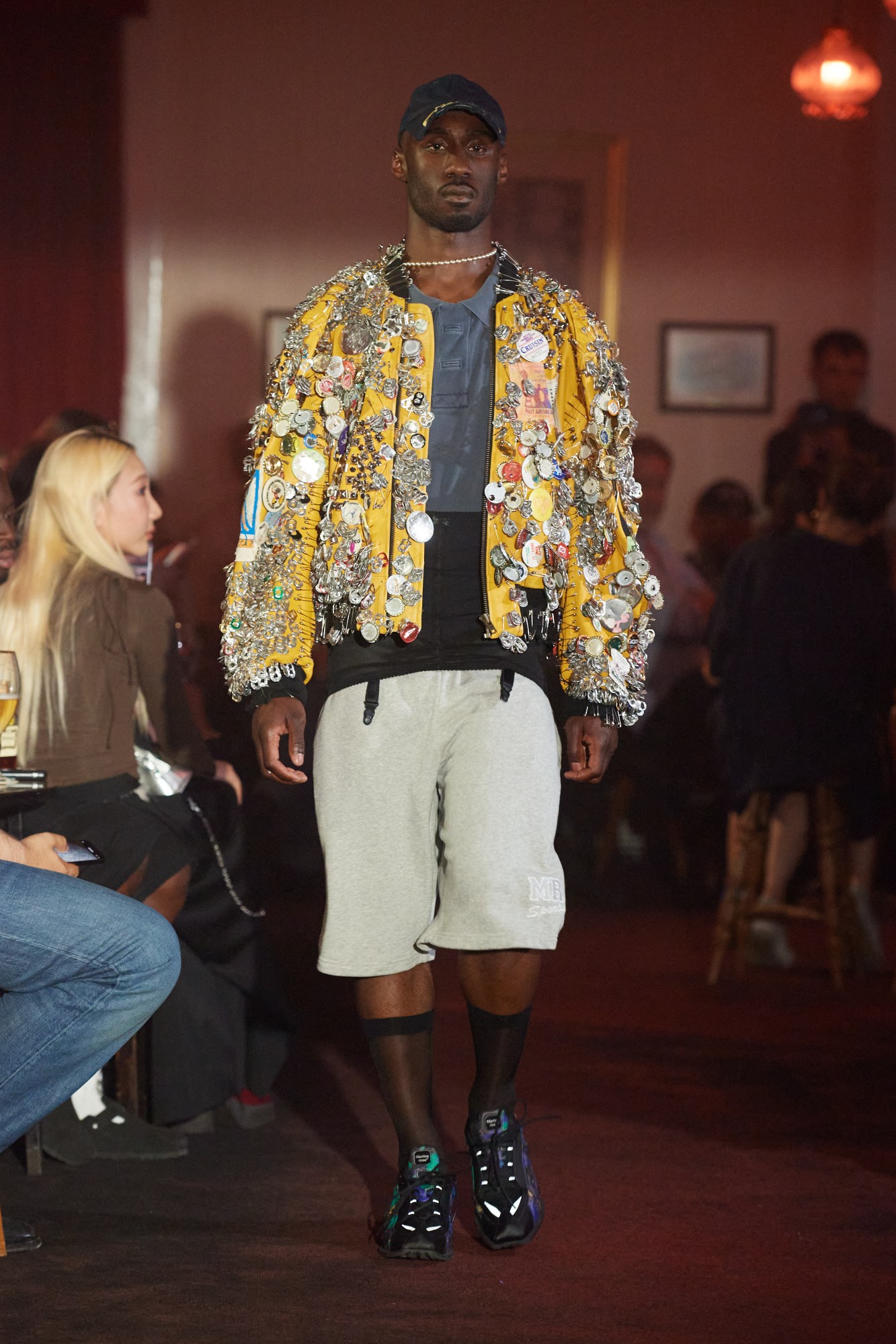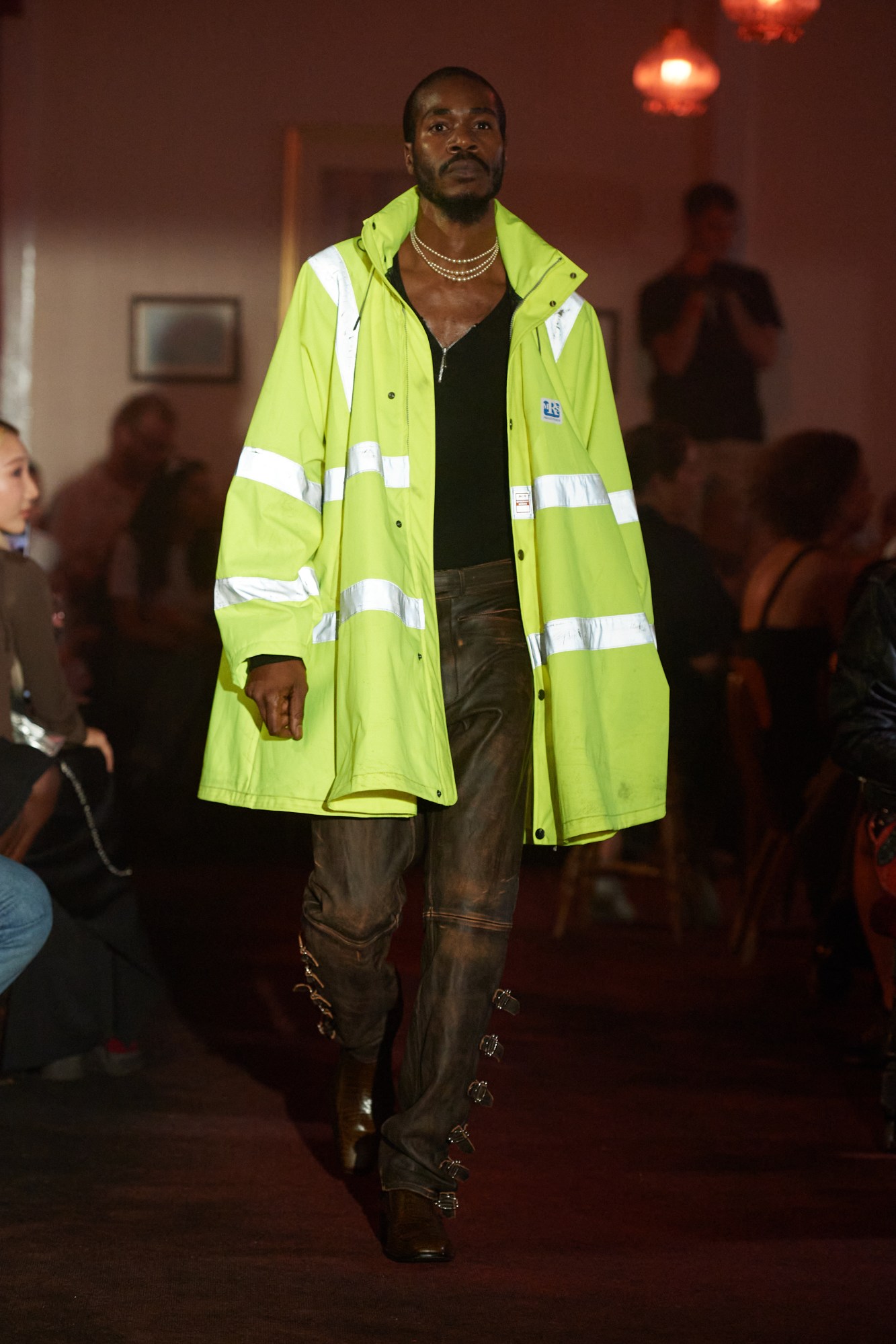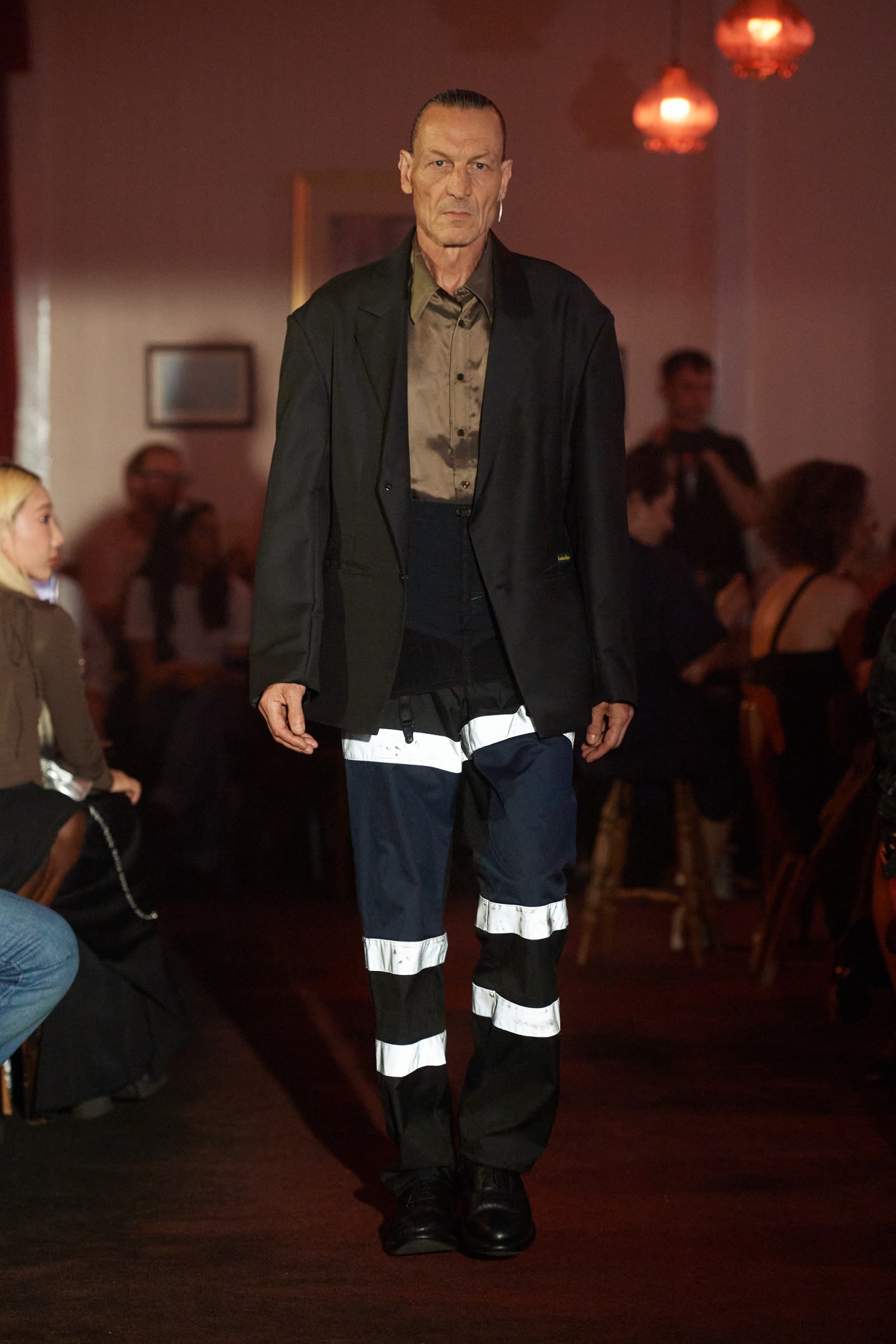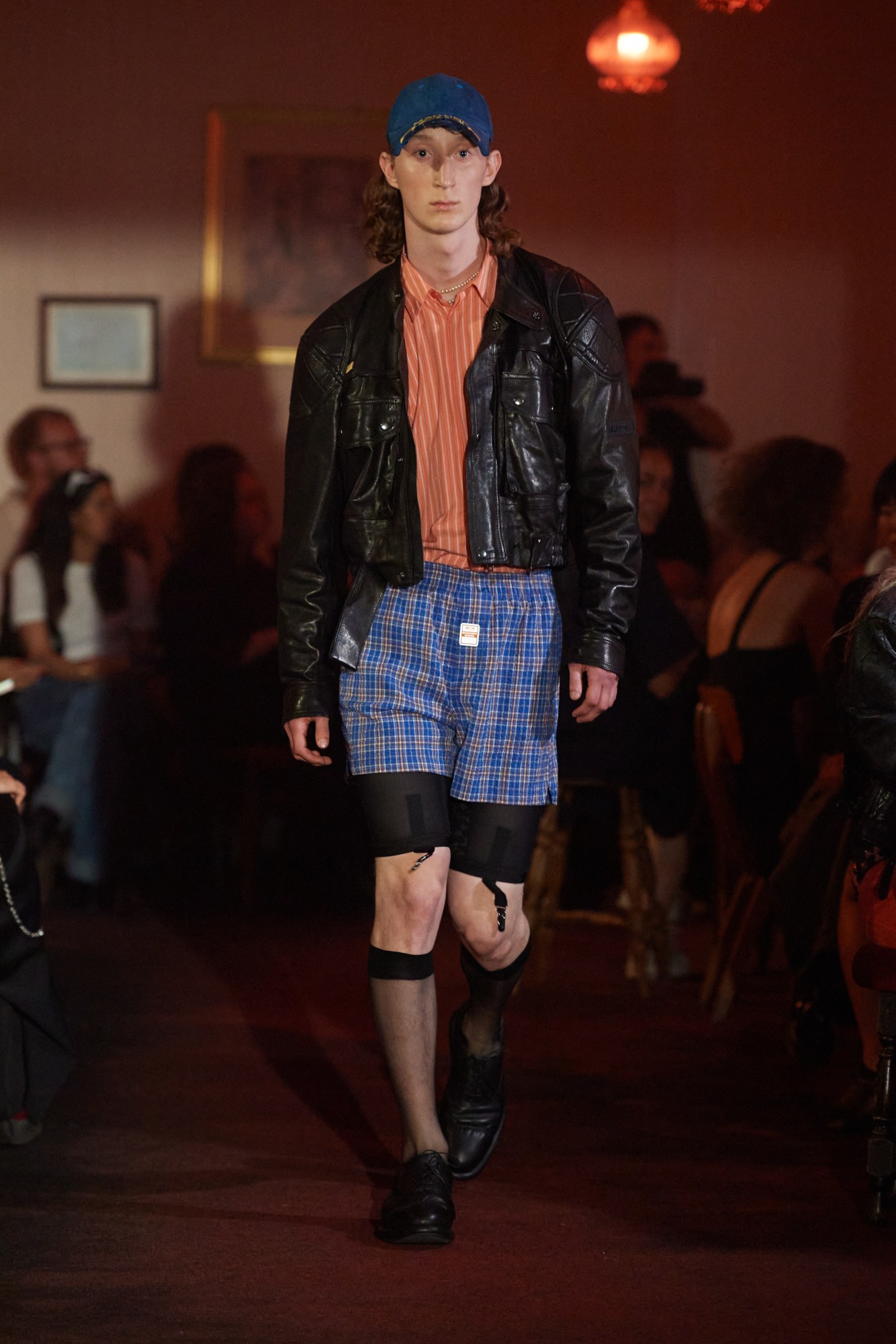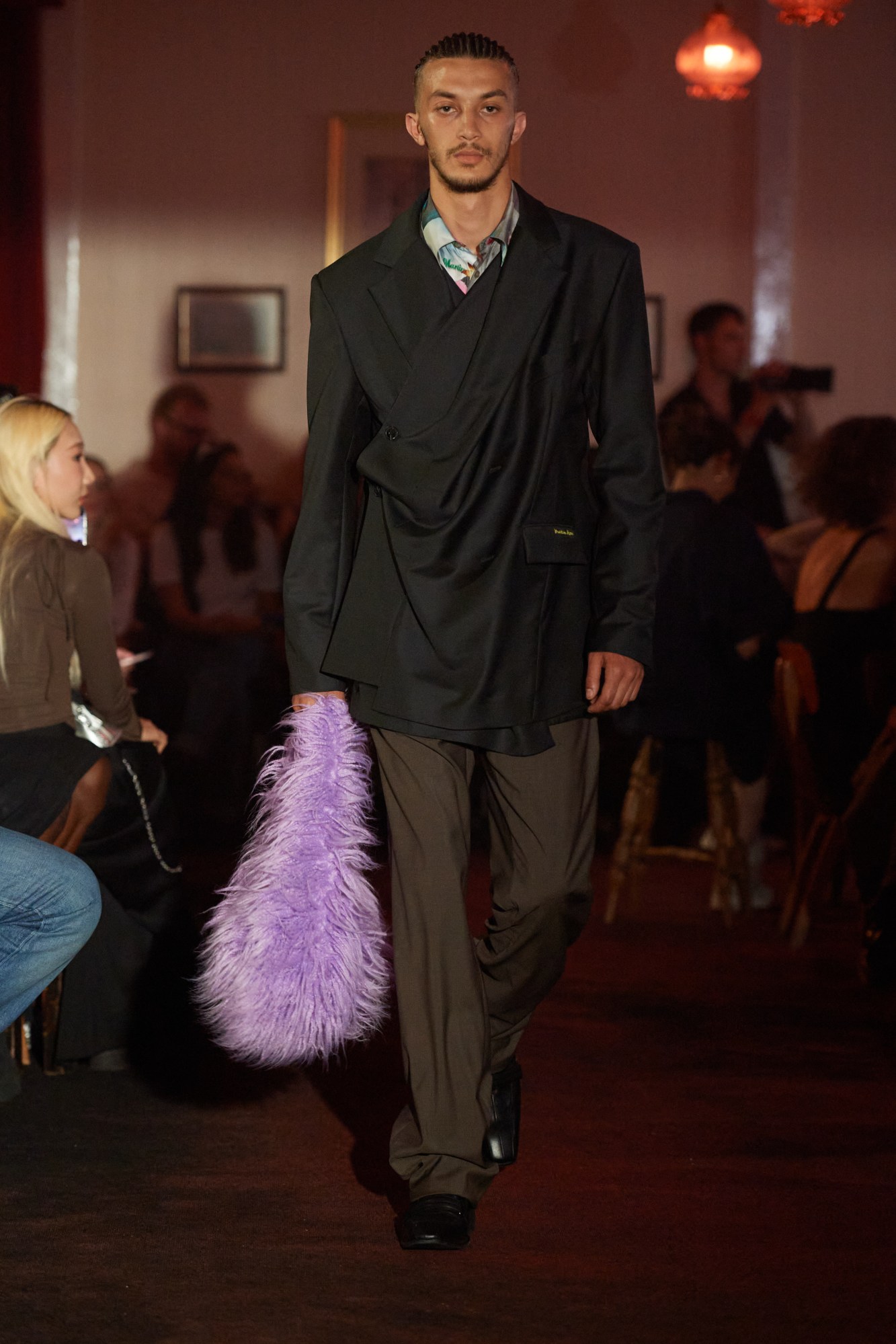The exploration of London’s local communities, and the locations key to their continued existence, has always been a pillar of Martine Rose’s namesake brand. It’s an ethos that has always made itself felt in the clothes – lovingly crafted homages to characters spotted at Clapham Common’s open-air afterhours, City diners, Afro-Caribbean produce markets and gay cruising clubs – but its arguably in Martine’s shows, invariably staged in the very locales from which she draws inspiration, that it truly comes to life.
This season was no exception, with London’s fash pack traipsing up Highgate Hill to a local community centre, not too far, in fact, from Martine’s current studio in neighbouring Crouch Hill. Stepping in from the sticky summer heat, you were immediately transported to the 70s and early 80s, when working men’s clubs like these thrummed with life, serving not only as daytime hubs for the communities around them, but as impromptu nighttime wellsprings for the city’s youth culture, as Martine explained post-show: “Before club culture was what it is now, people co-opted community spaces and ballrooms and put on nights there,” memories that were faithfully conjured by on seeing a crowd that included Daniel Lee, Neneh Cherry and Mustafa The Poet necking chilled pints of Stella in the space’s red-lit, sweaty haze.
It’s an energy that filtered down into the clothes worn by the characteristically eclectic cast of models that swaggered through a maze of tiny dark-wood tables, each to peals of cheers. A study in the displacement of volumes, gabardine flasher macs were given dropped shoulders and generous drapes of fabric that trailed from the yoke, affording them the elegance of opera capes; suiting in decadent jacquard towelling was cut wide, while crosshatch-quilted leather jackets had hunched shoulders, as if they were toiled on a biker mid-ride. An air of kink – a quality that Martine has made an intrinsic aspect of her sartorial grammar in recent seasons – was strongly felt in wipe-clean nappa pieces, denim jeans with duct tape knee patches, and pervy riffs on the sort of shiny suiting a regional estate agent might’ve worn in the 00s.
Elsewhere, this sensibility extended to the explicit dissent of gendered dress conventions – again, a Martine hallmark – with lace-trimmed camisoles and pearl collars worn by beardy male models in hi-vis construction jackets; corsetted, pec-framing vests with adjustable lingerie straps and square-toe mock-croc loafers; and dainty nylon stockings worn throughout. Putting archetypally feminine garments on male-presenting models is hardly a bold transgression these days, but perhaps what makes Martine’s approach so distinct is that her intentions here aren’t transgressive at all. “I love playing with gender lines, but for me, it’s a real proposition – it’s not a gimmick,” she shared. “I find men in women’s clothes sexy, and I find women in men’s clothes sexy, and I think that’s something to be celebrated and proposed always.”
Indeed, this earnestness is one of Martine’s defining traits, and one of the things that makes her work feel so distinct at a time when fashion is looked at as a cipher for these taxing times we’re living through. Sure, there will always be an anthropological quality to Martine’s work, if only by way of the fact that it draws so heavily upon her experiences and profound understanding of the city she has always called home. But rather than offer allegorical studies of London and the lives of those who live there, Martine casts light on often-overlooked aspects of the city with a sincerity, generosity and humanity that is incredibly rare in fashion today, making her output all the more worth cherishing.
A telling testament to this is the fact that what pleased her most about yesterday’s show wasn’t hearing crowds whoop and cheer at the mere sight of her clothes, nor seeing her brand’s loyal community while away the hours after the show sipping drinks in the community centre’s garden, but rather hearing of the possible impact that her show may have had in keeping a part of the city she cares so much about alive. “These community centres are vital – they’re a lifeline to people, and there just aren’t enough of them,” Martine said. “But today, Helen, who’s the manager, said, ‘Well, maybe this will help us stop from closing.’ That actually made my day.”


